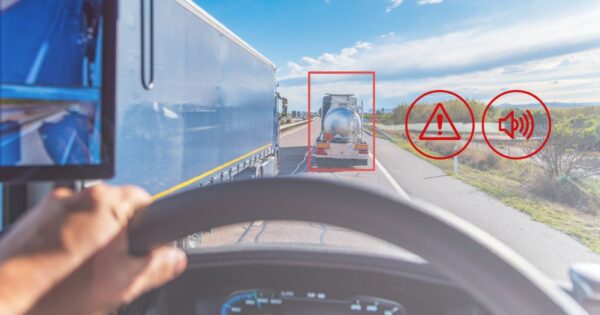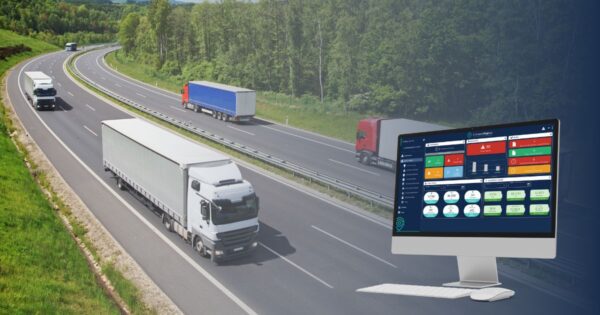The Safety Risks Found on a Construction Site
Construction workers make up 7.3% of the US workforce. But they account for 21.7% of workplace fatalities.
Every one of these deaths is a personal tragedy. But, combined with the equally significant number of serious injuries, together they represent an astronomical cost to the US construction industry, $4 billion per annum related to deaths, and an additional $7 billion for nonfatal injuries.
Can we do better? Yes, in fact, we must do better. Better means prioritizing a construction safety culture. One that focuses on transparency, ease of access to information, and open communication between decision-makers and employees.
Why Make the Investment in a Safety Culture
Effectively managed safety programs are proven to positively impact the bottom line for the company. Savings can range from $4 to $6 for every $1 invested into an effective safety program.
A video-telematics system is a solution that empowers safety cultures across construction sites, addressing risks such as heavy machinery which pose safety risks to on-site workers, as well as vulnerable road users. Risk arises during machinery transit and at the entrance of the construction site. Video telematics provides real-time data for analysis, risk detection, and incident prevention through enhanced visibility and blind-spot elimination, and the ability to futureproof by risk planning.
Choosing the Right Tools to Establish a Successful Safety Culture
Getting value out of the systems employed is imperative, many construction operations currently suffer from an excess of data and a lack of time to spend wading through it, with only 23% using the data their systems produce to influence decision-making.
An active safety management system should warn drivers and those around the vehicle when there is a risk of collision or other threats. Speed and clarity of decision-making are paramount for a successful construction operation, to ensure competitiveness and to meet tight deadlines. To assist in providing speed and clarity site managers need smart systems that streamline management processes and eliminate repetitive tasks.
The Impacts Video Telematics Has on Construction Safety Programs
A Full Picture. Video and Telematics: Understanding how your operators are using machinery, allows for better management. Telematics used together with video footage provides a context, that otherwise wouldn’t be possible. Video adds value to telematics data. Together the two, empower construction managers to widen their safety strategy and training initiatives. This can take the form of evidence-based monitoring and intervention to prevent risky use of machinery. Which will improve safety across the construction site.
Blind Spot Elimination: Simply installing cameras won’t be a meaningful safety solution. Instead, it is important to find a supplier that understands the unique issues experienced by construction operators. One that considers what other technologies can support the cameras, such as sensors that produce audible alerts, and the operators need to have real-time visibility through an in-cab monitor. These additional technologies are needed as large construction machinery is often working in tightly confined and busy work sites. This means machinery operators need as much assistance and warnings to safely move around people and other equipment.
A supplier with this unique understanding of how construction sites work, will be the one who can provide a camera system that can meaningfully eliminate blind spots and assist in producing a safety culture in a construction setting. One that provides vehicle operators with a 360-degree view of their surroundings. This is important as experience can’t prepare an individual for something they can’t see. Through this unique technology stack, the human limitation of 180-degree frontal vision is compensated. It also empowers the vehicle operator and people outside the vehicle to be aware of danger through the sounding of audible alerts.
Preventing Legal Issues and Insurance Claims: Staged accidents involving construction vehicles are becoming more common, with the burden of proof largely on the commercial vehicle. The safety implications for vehicle operators are a big concern for safety managers, as the mental drain of being involved in such a legal battle can negatively affect the employee. However, with good-quality time-stamped footage and GPS data, innocence can quickly be proven. Furthermore, being able to prevent these fraudulent claims alongside an overall improvement to construction site safety thanks to the video telematics system will positively impact insurance premiums. The reduced insurance premium is a consequence, of an improved risk profile because of the preventative measures enabled by the safety system.
Additional, Non-Safety Benefits
Better Resource Management: Construction sites are agile workplaces, and it is commonplace for planned activities to change. This is a major pitfall that can result in vehicles being underutilized and left idle. However, with a video telematics system site managers can check their smartphones to identify which drivers and vehicles can be diverted to another job. At a macro level over time, it is possible to identify optimal scaling requirements, to determine when investments into new equipment are needed, or if it is better to downsize and replace multiple vehicles with one that can have multiple attachments fitted.
Preventative Maintenance: The use of video telematics data can identify potential service issues, enabling preventative maintenance, this will reduce workflow interruptions and save time, money, and lost revenue by not having to hold jobs while repairs are carried out.
Safety Cultures Result in a More Successful Construction Operation
Construction operations that embrace a data-driven approach and effectively manage the insights generated by their video telematics system not only gain insights that improve construction safety but also information that can lead to improved operational efficiency. This allows a larger volume of customers to be served, greater accountability over asset utilization and management, and reduced operating expenses.
Learn more about how CameraMatics empowers construction operators to achieve such efficiencies today.








